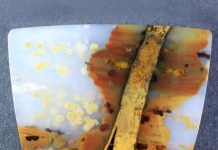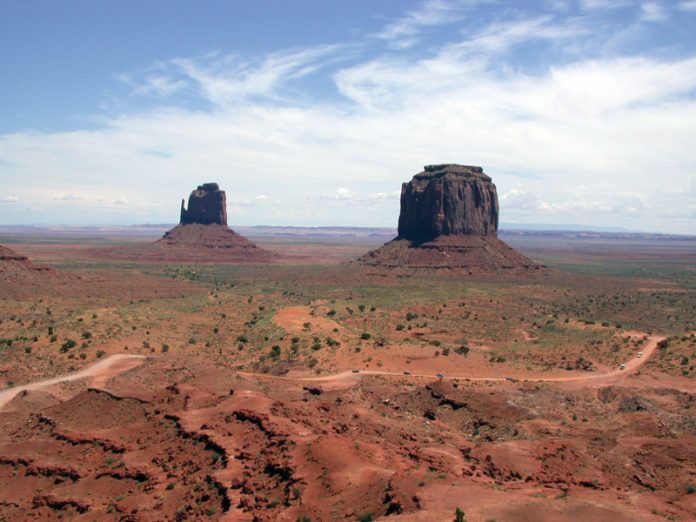
Is the legend of the lost Mitchell and Merrick silver mine, in Monument Valley, Arizona, true? No one is sure, but read on and make your own decision.
The Monument Valley Region
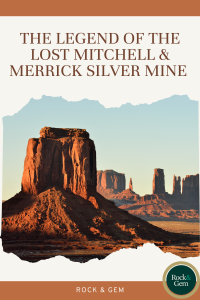
Monument Valley is a magical and majestic area located on Native American Navajo land in the northeast corner of Arizona and southern Utah, at 5,564 feet elevation. The region is part of the Colorado Plateau. The Monument Valley Navajo Tribal Park was established in 1957 and includes 91,696 acres within the approximately 16-million acres Navajo Reservation. The Navajo people prefer to be called Diné, which means The People. In their language, Monument Valley is known as Tse’Bii’Ndzisgaii meaning Valley of the Rocks.
Monument Valley is famous for its towering sandstones and fragile rock pinnacles that rise 400 to 1,000 feet from the desert floor, surrounded by miles of mesas and buttes. These rock formations are the result of wind and water erosion during the past 50 million years. Their bright red coloration is due to iron oxide exposed in the weathered siltstone. Depending on the time of day, season, sun, shadows, and scenic clouds, especially during the summer monsoon rainy season, the scenery can be spell-bounding. In addition to the pictorial landscape, an eerie silence with only the wind whistling between the buttes, chimes the ancient history of rocks and people.
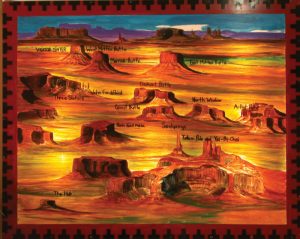
Movie Fame
The visitor’s center offers a view of the world-famous Mitten Buttes and Merrick Butte, and the Mitchell mesa, all part of the renowned panorama featured in many photographs and western movies. The long list of movies shot within Monument Valley includes Director John Ford’s 1939 famous Stagecoach, My Darling Clementine (1946), Fort Apache (1948) and other films as recently as 2011.
A small uranium-vanadium mine, the Mitchell Mesa Mine, was located on Mitchell Mesa. Mining permits and leases for this mine were issued by the Navajo tribal Council and approved by the Bureau of Indian Affairs. It permanently closed in 1966 (AZ Geological Survey, 1965). But about a century earlier a silver mine, known as the Navajo Pishlaki mine, became the center of a legend.
The Story of Merrick & Mitchell
In 1863, two army soldiers, Jack Merrick and Ernest Mitchell served under Army Col. Kit Carson, detailed to round up and relocate the Navajo people. Merrick and Mitchell admired and examined the silver jewelry worn by the Navajo. In 1879, assuming the silver for that jewelry came from a nearby mine, they returned as prospectors to search for a rich silver mine.
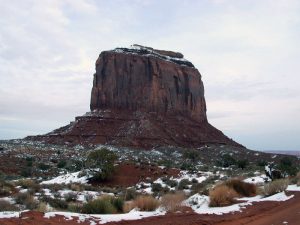
According to a slightly different version of the story, Jack Merrick first found the silver alone. After he returned to Durango, Colorado, he had his silver assayed to over one thousand dollars per ton. He then asked young Mitchell to join him on his return trip to the mine, and supposedly went as fur trappers.
Continuing the story’s first version, Merrick and Mitchell carried on looking for the silver ores until they were successful. They collected their silver samples, but the Navajo warned them to leave the land and never return. After they headed east to Cortez, Colorado, Mitchell and Merrick kept re-telling their story, looking for investors to refine their silver, until a man named Jarvis agreed to finance the prospectors with the stipulation that they would go back for additional samples.
Returning to the Area
Ignoring the Navajo warning, the miners returned to the mine in 1880 and resumed collecting silver specimens. But the Navajos had been watching and attacked them. Merrick was killed instantly, and Mitchell was wounded and killed the next day. When the investors’ posse returned to Monument Valley, the Navajos led them to the prospector’s graves, but denied the killings, and said that a renegade band of Paiutes killed them. The posse found rich silver ore samples next to Mitchell’s body.
In 1882, another prospector from Missouri, Cass Hite, befriended the Navajos in Kayenta, and taught them how to identify gold, silver, and copper ore, in the hopes they would share with him the location of the lost silver mine, which they never did.
Even though Navajos admit that silver mines do exist within Monument Valley, they say that only a few tribal leaders knew the location, and since the last chief who knew the location died a few decades ago, the Navajo silver mine’s location remains a secret and mystery. The two towering buttes, where the miners’ bones are buried, still bear their Anglo names.
Is the Mitchell and Merrick story true or just a legend? The reality is that a recent discovery of massive silver boulders near Globe was unearthed. But, since no mining or rockhounding is permitted in Monument Valley, the legend will live on.
Getting There
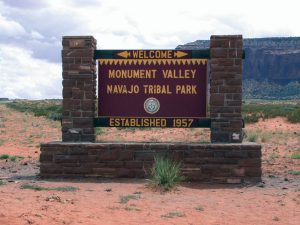
The nearest town to Monument Valley is Kayenta in Arizona, on scenic route AZ 163. The park’s entrance is in Utah. The park is open daily from 6 a.m. to 8 p.m. May through September, and 8 a.m. to 5 p.m. October through April. Admission is $10 per person or twenty dollars per car with up to four passengers. A visitor’s center, gift shop and restaurant are near the entrance. Monument Valley is a Tribal park and not a National park so National Park passes are not honored.
This story about the Mitchell and Merrick Silver Mine previously appeared in Rock & Gem magazine. Click here to subscribe! Story by Helen Serras-Herman.



